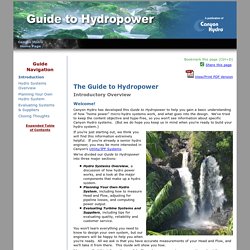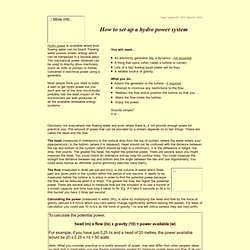

Hydroelectricity. Hydroelectricity is the term referring to electricity generated by hydropower; the production of electrical power through the use of the gravitational force of falling or flowing water.

It is the most widely used form of renewable energy, accounting for 16 percent of global electricity generation – 3,427 terawatt-hours of electricity production in 2010,[1] and is expected to increase about 3.1% each year for the next 25 years. Hydropower is produced in 150 countries, with the Asia-Pacific region generating 32 percent of global hydropower in 2010. China is the largest hydroelectricity producer, with 721 terawatt-hours of production in 2010, representing around 17 percent of domestic electricity use. There are now four hydroelectricity stations larger than 10 GW: the Three Gorges Dam and Xiluodu Dam in China, Itaipu Dam across the Brazil/Paraguay border, and Guri Dam in Venezuela.[1] The cost of hydroelectricity is relatively low, making it a competitive source of renewable electricity.
Www.microhydropower.com. S Free micro-hydro calculator. Our Free Micro-Hydro Calculator Use to calculate: Power or watts your stream can produce Necessary pipe diameter for your penstock (based on Hazen-Williams pipe-friction formulas) Amount of money you'll save by generating your own electricity Number and size of nozzles Motor output (volts and either watts or amps) per RPM Which generator/turgo combo is right for your site The calculator is in Microsoft Excel format.

If you have Microsoft Office, you should have Excel. The calculator is very easy to use and to understand. IF you do not have Microsoft Excel please contact us and we can run the numbers for you! Guide to Hydropower. Canyon Hydro has developed this Guide to Hydropower to help you gain a basic understanding of how "home power" micro-hydro systems work, and what goes into the design.

We’ve tried to keep the content objective and hype-free, so you won’t see information about specific Canyon Hydro systems. (But we do hope you keep us in mind when you’re ready to build your hydro system.) If you’re just starting out, we think you will find this information extremely helpful. If you’re already a senior hydro engineer, you may be more interested in Canyon’s Utility/IPP Systems. We’ve divided our Guide to Hydropower into three major sections: Hydro Systems Overview, a discussion of how hydro power works, and a look at the major components that make up a hydro system. You won’t learn everything you need to know to design your own system, but our engineers will be happy to help you when you’re ready. I hope you find this information useful. Daniel A. NEXT ð. Steward Community Woodland - How to set up a hydro power system. Obviously not everywhere has flowing water and even where there is, it not provide enough power for practical use.

The amount of power that can be provided by a stream depends on to two things. These are called the head and the flow. The head (measured in metres(m)) is the vertical drop from the top of system (where the water enters your pipe/penstock) to the bottom (where it is released). Ibasei's Cappa provides hydroelectricity on a small scale. The Cappa compact hydropower generator can deliver 250 W of electricity Image Gallery (4 images) Despite being the most widely used form of renewable energy worldwide, hydroelectricity is generally reserved for large-scale commercial installations built around massive dams.
Japanese company Ibasei has shrunk things down and removed the need to build a dam with its Cappa compact hydropower generator – a system that's designed to be installed along a river or waterway. The basic design of the Cappa is nothing new – blades rotate as the water flows through the unit, which drives a turbine to generate electricity. However, the unit is encased in a special diffuser that is designed to increase the velocity of the water at the point where it passes over the blades, thereby increasing the unit’s electrical output. While larger blades have the potential to deliver more power, their optimum size is determined by the size, width and speed of the river in which they are placed.
Source: DigInfo TV.